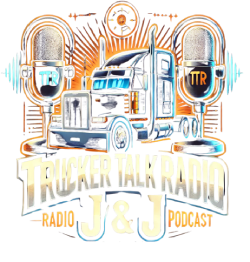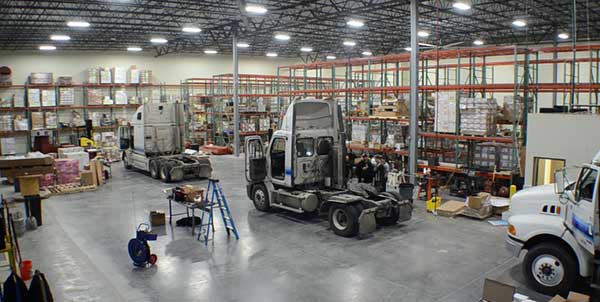Nick Pittinger from Decisiv is a prominent figure in Fleet Equipment’s quarterly analysis of truck service trends. During our previous conversation, the vice president of data services anticipated a 3-5% increase in truck service activities for Q4 2024. We now have the Q4 2024 truck service data available.
How accurate was Pittinger’s forecast?
By examining truck service trends in the TMC/Decisiv Q4 2024 report, we can uncover new insights regarding service activities, changes in costs, and component demand.
Rising Service Activity Coupled with Cost Reductions
A key highlight from Q4 2024 is the surprising trend of increasing service volumes along with falling costs. Service activities have risen by almost 5% from the previous quarter, continuing the positive trend observed throughout the year. Despite this growth, overall costs for parts and labor have decreased, reversing the upward trend seen in Q3.
This notable cost drop is especially significant as it marks the first decrease in labor costs in a considerable period—a 1.9% decline quarter-over-quarter and nearly 1% year-over-year. Historically, even during falling parts costs, labor rates were typically on the rise due to technician shortages. Rob Ziemba, vp of marketing at Decisiv, commented, “We are finally observing a decline in labor costs… This could indicate improved technician retention, a previously significant factor in escalating labor costs.”
Powertrain and Exhaust Systems Remain Major Cost Contributors
As expected, powertrain and exhaust systems dominated service costs, comprising 47% of the total expenses. These systems should remain key focuses for maintenance planning due to their complexity and wear rates, which ensure consistent demand.
Alongside these primary systems, cooling, brakes, fuel, and cab-related systems ranked as additional significant cost contributors. While these categories remained relatively stable, variations were noted in specific components.
Component-Specific Price Changes: Increases and Decreases
Although overall costs have generally declined, certain components have continued to see price increases, while others experienced significant reductions.
Components with Price Increases
- Transmissions – Costs have consistently risen for five quarters due to ongoing challenges in servicing both automated and manual transmissions. Ziemba remarked, “Transmission service not only increased this quarter but has been on the rise for five consecutive quarters.”
- Aerodynamic components – Likely linked to heightened investments in fuel efficiency.
- General accessories – This category is expanding, showing a rising demand for replacement and specialty parts.
- Frame components – Experienced an increase over the last quarter but remained lower year-over-year, suggesting a temporary rise.
Components with Price Decreases
“The most significant year-over-year drops include manual transmissions, axle-driven mechanisms, and drive shafts,” Ziemba noted. “These changes are chiefly driven by decreasing parts costs.”
- Manual transmissions, axles, and drive shafts – These components have seen steep price declines mostly due to reductions in parts costs rather than labor costs.
- Fuel systems – Notably dropped by 10.2%, reflecting a decline in seasonal demand as winter approaches.
- Steering systems – Costs decreased by 5% year-over-year, although a recent uptick hints at potential future price pressures.
Factors Influencing These Service Trends
The analysis of truck service trends from the report reveals several overarching industry elements:
- Freight Demand & Truck Tonnage Index – The ATA’s index fell last quarter, likely contributing to the reduction in parts and labor costs. Ziemba linked this with service cost decreases, stating, “The tonnage index decline is a positive sign toward decreasing costs.”
- Enhanced Technician Retention – The stabilization in labor costs implies that shops are likely retaining technicians for longer periods, easing inflationary burdens on service rates.
- Advancements in Technology & Driving Behavior – The rise in adaptive cruise control and driver assist systems may reduce the stress on transmissions and axles, which could ultimately lessen the need for repairs over time. Ziemba acknowledged this possibility, deeming it a likely factor.
- Aging Manual Transmissions – As fleets phase out manual transmissions, overall service costs decrease. However, as their prevalence declines, labor costs could rise due to a shrinking pool of technicians skilled in servicing them.
“As fleets retire these assets, we might see costs decreasing initially, but with reduced technician availability, labor and parts costs could rise due to limited supply,” Ziemba cautioned.
Regional Cost Disparities: Service Rates by Area
For fleets that can choose service locations, regional cost variations are significant. In Q4 2024, the West emerged as the priciest region for service, followed by the South, Northeast, and Midwest, while Canada offered the lowest rates.
“For long-haul fleets with service location flexibility, opting for maintenance in the Midwest or Canada is generally more cost-effective compared to the West or South,” Ziemba recommended.
Insights for Fleet Managers
With the rise in service volumes and fluctuating costs, truck equipment managers should focus on the following strategies:
- Monitor transmission service trends – With steady rising costs for transmissions, being proactive about potential failures is vital.
- Utilize seasonal cost drops – Leverage reduced costs in fuel and steering systems during Q4 for preventative maintenance.
- Emphasize technician retention – The stabilization in labor costs suggests that retaining skilled technicians can help manage maintenance costs in the long run.
- Optimize service locations – Recognizing regional cost differences can greatly impact overall expenses, so scheduling maintenance in lower-cost areas is advisable where feasible.
Anticipating 2025 Truck Service Trends
While Q4 has shown promising cost reductions, the persistent rise in service activity indicates that fleet maintenance demands are expected to remain robust in 2025. Staying vigilant on component-specific trends and implementing cost-effective service strategies will be essential for truck equipment managers aiming to ensure seamless operations.


